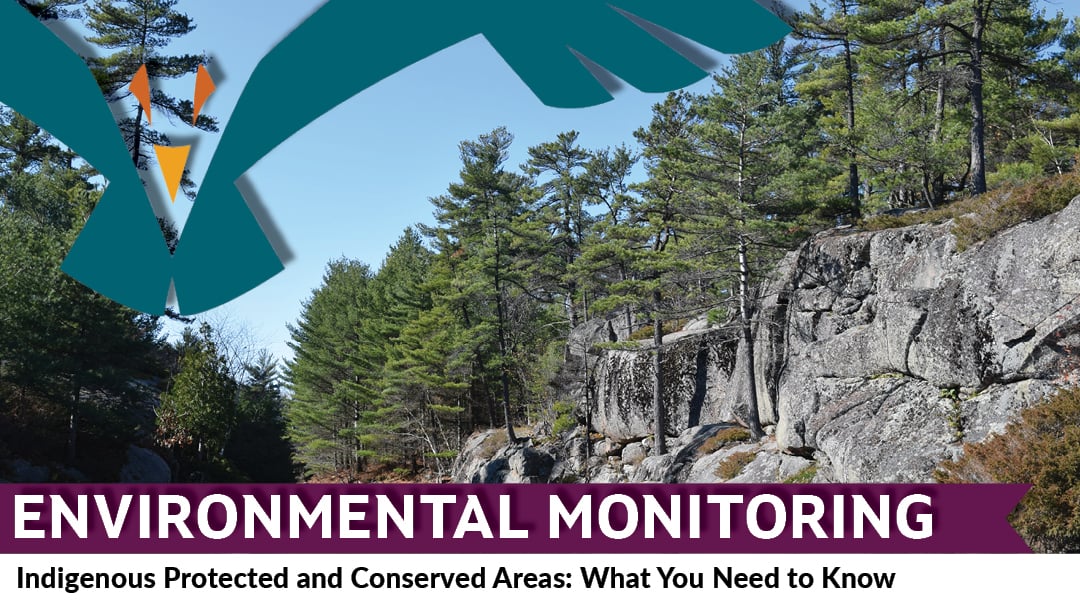If you've been following our Environmental Monitoring blog series, you've hopefully been inspired by all the ways environmental monitoring can benefit your community. One benefit of having baseline data from environmental monitoring that you may not have thought about is for the establishment of an Indigenous Protected and Conserved Area (IPCA) to further your Nation's conservation and stewardship goals.
Rumours have been swirling for some months that there is new federal funding on the horizon to support the establishment of IPCAs across Canada. And with Canada’s commitment to Target 1, there’s no doubt the feds are relying on Indigenous participation in IPCAs to hit the ambitious target of conserving 25 percent of Canada’s land and 25 percent of its oceans by 2025.
Our team at SVS is passionate about the potential for IPCAs to transform relationships between Indigenous Peoples, non-Indigenous people, and the natural world — for the sake of us all. Indigenous Nations are changing the narrative around conservation to shift away from colonial approaches to conservation that separate Indigenous Peoples from their territories and we are delighted to be part of this shift.
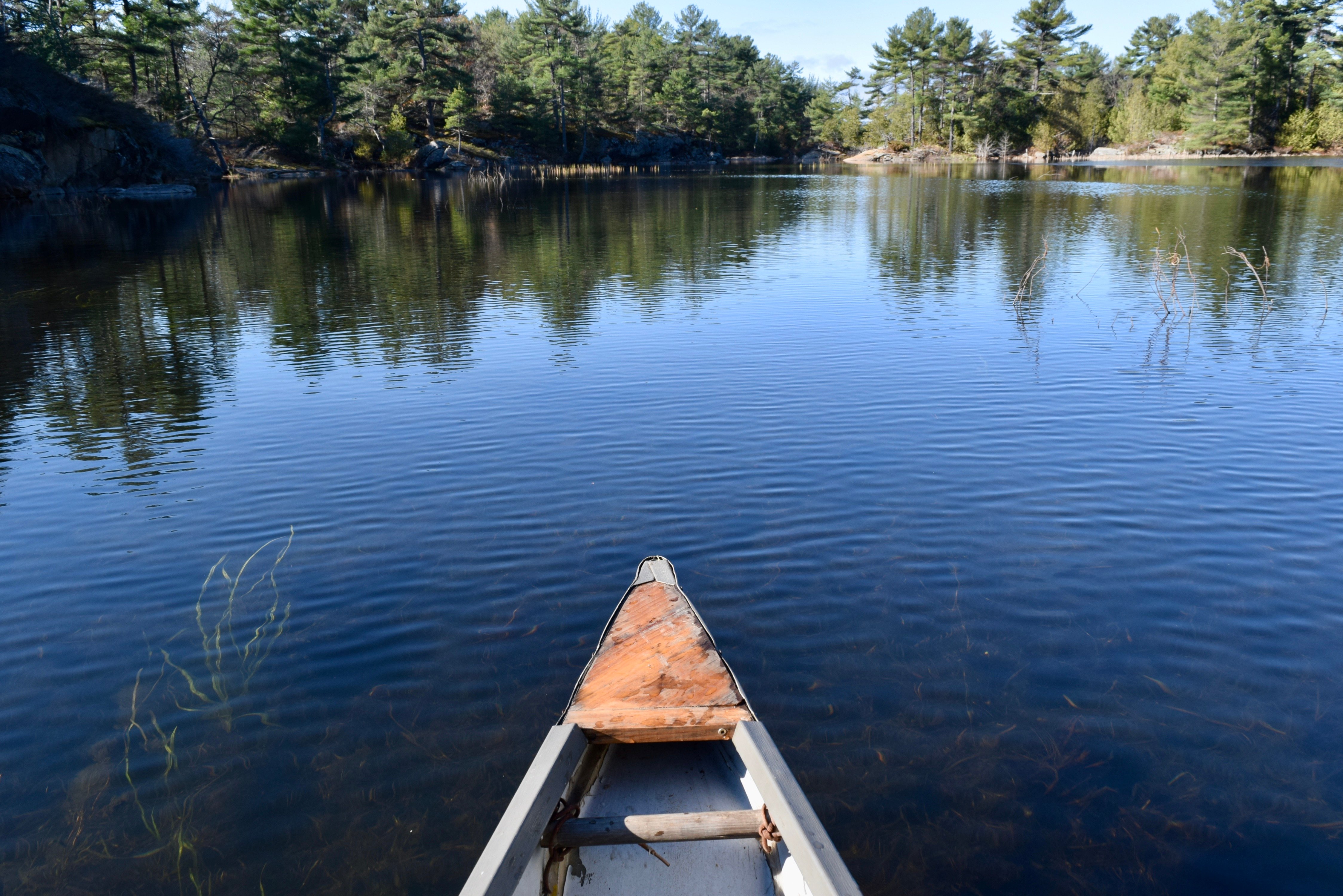
We decided to write this blog to contribute to the already vibrant conversations about Indigenous-led conservation by adding our own experiences supporting our clients’ IPCA projects. We’ve also had a go at summarizing the whole conversation and pointing you to the resources we’ve found useful in our work. We are big fans of our friends at the Indigenous Leadership Initiative who are doing fabulous work in this space. Please visit their site for a rich selection of videos and other useful resources.
If you have questions about how these Indigenous-led conservation spaces work — what they are, their benefits, how to establish them, and how to fund them and make them economically viable, read on!
The Basics: What is an IPCA?
Indigenous Protected and Conserved Areas (IPCAs) are places where Indigenous Peoples lead the stewardship and governance of the lands and waters using Indigenous laws and knowledge systems.
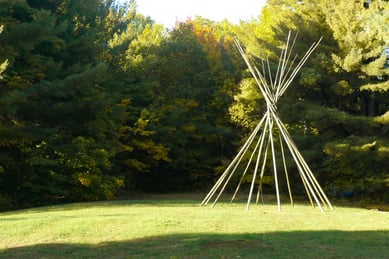
IPCAs were defined in the Indigenous Circle of Experts (ICE) report titled, We Rise Together as “lands and waters where Indigenous peoples play the primary role in protecting and conserving ecosystems through Indigenous laws, governance and knowledge systems.” We HIGHLY recommend reading the report if you really want to dig into this topic.
IPCAs are not a new concept. Indigenous Peoples have been stewarding the lands and waters since time immemorial. However, IPCAs are a renewed opportunity for Indigenous Peoples to reclaim their role as stewards of their ancestral territories. Following the release of the We Rise Together report, and financial support from Canada through Target 1, IPCAs are proliferating across the country.
Three common characteristics
IPCAs are as diverse as the Indigenous Nations leading them, but they share t hree common characteristics:
hree common characteristics:
- Indigenous led
- Represent a long-term commitment to conservation
- Elevate Indigenous Rights and responsibilities
Revitalizing language and culture are also at the heart of IPCAs.
IPCAs can be a transformative approach to relationship building between Indigenous Peoples, non-Indigenous people, and the natural world. As part of their exercise of self-determination, Indigenous Nations play the primary role in defining the IPCAs — the objectives, boundaries, management plan, and governance structures. The existing system for conserving the lands and waters must make space for Indigenous Peoples to lead IPCAs.
Resources:
- Indigenous Circle of Experts (ICE) report: We Rise Together
- Indigenous-Led Conservation Reading List - Google Docs
What are the Benefits to Indigenous Nations who Establish an IPCA?
There are many benefits that IPCAs can provide to Indigenous Nations who choose to advance them. These benefits can manifest in different ways as the context, values, and intent behind the IPCAs are different for each Nation advancing an IPCA.
Some key benefits:
- Reclaiming the Rights and responsibilities that Indigenous Nations have to their territories
- Re-establishing and rejuvenating Indigenous laws, governance, and knowledge systems as a basis for decision-making
- Restoring relationships to lands and waters that have been severed through colonization
Shawanaga Island IPCA
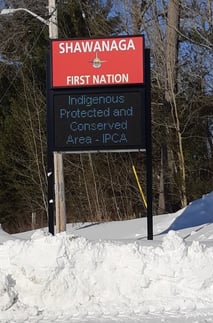 At SVS, we have been working with Shawanaga First Nation to establish an IPCA on Shawanaga Island. A key element of this IPCA will be to foreground Anishinaabe laws, principles, and governance systems into all decision-making about the IPCA. You can read more about our work with Shawanaga here: Eight Ways GIS is Helping Shawanaga First Nation Establish its IPCA
At SVS, we have been working with Shawanaga First Nation to establish an IPCA on Shawanaga Island. A key element of this IPCA will be to foreground Anishinaabe laws, principles, and governance systems into all decision-making about the IPCA. You can read more about our work with Shawanaga here: Eight Ways GIS is Helping Shawanaga First Nation Establish its IPCA
More benefits:
- Cultural revitalization
- Economically and environmentally sustainable business opportunities
Cultural revitalization, reclamation, and healing opportunities that include truth-telling about histories are another way that IPCAs can benefit Indigenous Nations. IPCAs offer an opportunity for Indigenous Nations to pursue economically and environmentally sustainable business ventures that align more with Indigenous values and worldviews and shift away from industries such as resource extraction that can undermine the core values that many Indigenous communities hold with respect to living sustainably and in good relation with their lands and waters.
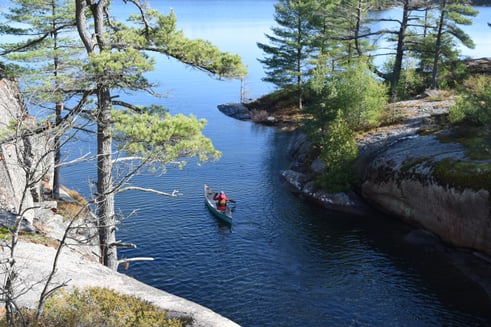
Some other examples of IPCAs across Canada:
Australian examples show very positive ROI
Research in Australia has shown that Indigenous Protected Area programs, combined in Indigenous Ranger or Guardians programs, can generate up to three dollars in social, economic, and cultural benefits for every one dollar invested. Initial analyses of programs in Canada are showing similar results. Talk about a great return on investment!
Indigenous Protected Areas in Australia have been developing since the late 1990s and continue to expand, with almost half of the national park system in Australia being protected through Indigenous Protected Areas.
Some of the benefits that have emerged over the years include:
- Opportunities for Traditional Owners to work on the land and reconnect with their heritage and language
- Stewardship responsibilities
- Transfer Traditional Knowledge between generations
- Consistent employment through Rangers programs
- Revenue generation through tourism and carbon offsets
As IPCAs continue to develop across Turtle Island, similar benefits are being documented.
How Do I Go About Establishing an IPCA?
The most important steps in establishing an IPCA are defining its boundary and ensuring that the Indigenous Nation is recognized as having jurisdiction and authority over the lands and waters being conserved and protected within the defined boundary. In this blog post by West Coast Environmental Law in 2017, getting IPCAs recognized by both Indigenous Nations’ own laws and Canadian law can be a difficult path to navigate. While the federal government has provided support for IPCA establishment through funding allocations and their acknowledgement of the importance of IPCAs in reaching Canada’s targets for conservation, there is currently no formal recognition of IPCAs under Canadian legislation. As a result, currently Indigenous Nations are having to approach provincial and territorial governments to discuss together how to protect and conserve the lands and waters under an IPCA without explicitly supportive Canadian legislation..jpg?width=677&name=MitchAvis_IPCA_2018.08%20(6).jpg)
However, it’s important to remember that IPCAs are Indigenous-led initiatives, and as West Coast Environmental Law states in their blog: “They are modern expressions of the inherent authority of Indigenous nations and exist whether or not the Canadian state recognizes them.” Depending on the location, goals, and capacity of the Nation pursuing an IPCA, there are a variety of different strategies to work towards effective Indigenous jurisdiction of the area. We are also at an exciting time, with the United Nations Declaration on the Rights of Indigenous Peoples Act very recently coming into effect in Canada — under the international Declaration, Indigenous Peoples have the right to determine how their territories and resources are used, including the decision to create a conservation area.
Communication is key
From our own experiences in supporting our clients’ IPCA initiatives, we cannot stress how important a strong communications plan is to establishing an IPCA. Very intentional and frequent messaging throughout the establishment process helps Nations build awareness and understanding, and ultimately support, of their IPCA with their own membership, neighbours, and local governments. Intentional two-way communication is also critical to nurturing relationships, and in some cases establishing more formal partnerships, with local communities (such as neighbouring Indigenous Nations, cottagers’ associations, local conservation groups, municipals governments — and more). Not only does this relationship and partnership building help foster a spirit of reconciliation and a supportive environment for education and learning, but it can also help garner support from these allies as your IPCA moves towards formal establishment and recognition by the provincial and federal governments.
Where Does the Funding Come From to Create an IPCA?
Funding from the federal government is becoming the most common starting point for mobilizing IPCAs. The federal government has committed up to $340 million in funding over the next five years to support initiatives led by Indigenous Peoples in conservation. This funding comes with the recognition that Indigenous Peoples, as the original stewards of their territories, have both Rights and responsibilities associated with their lands and waters that uniquely position them to lead conservation in these areas. Of this $340 million, over $166 million will support IPCAs specifically. A total of 27 communities are currently receiving funding for establishing IPCAs and 25 additional communities are receiving funding for conceptualization. The government funding dedicated to other programs such as Guardians and Indigenous species-at-risk work can also contribute to IPCAs since these other pools of funding are tightly interwoven with stewardship and conservation.
The details of the new federal funding haven't been released, but follow the Talon, our bi-weekly funding and news digest, and we will be the first to tell you!
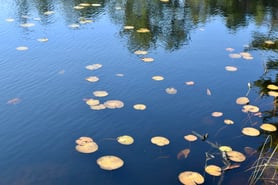 Other opportunities for funding an IPCA — especially at the conceptualization stage — can also come from research institutions such as the University of Guelph, which houses the Conservation through Reconciliation Partnership (the CRP). Depending on your Nation’s unique situation, there may also be other opportunities for private funding that could be used to support various stages of your IPCA’s establishment.
Other opportunities for funding an IPCA — especially at the conceptualization stage — can also come from research institutions such as the University of Guelph, which houses the Conservation through Reconciliation Partnership (the CRP). Depending on your Nation’s unique situation, there may also be other opportunities for private funding that could be used to support various stages of your IPCA’s establishment.
Resources:
- Funding for engagement on an action plan to achieve the objectives of the United Nations Declaration on the Rights of Indigenous Peoples
-
Four Creative Ways to Fund Your Environmental Monitoring Project - Similar funding sources could be available for an IPCA so give us a call to chat more about what options could be available to your community
How Can We Make The IPCA Self-Sustaining For The Long Term?
Long-term sustainability of IPCAs is critical for the efforts that Indigenous Nations put into these areas to provide the benefits that they can offer. Although government funding to create IPCAs may be critical to their initial establishment, there is a need for consideration around financing IPCAs that are self-sufficient and do not rely on government grants. There are many ways that financial sustainability might be achieved for IPCAs and there is work ongoing to innovate in this area. Some examples of mechanisms for maintaining IPCAs include green bonds, ecotourism, renewable energy, and carbon offsets. There are organizations and research groups who are also working towards establishing networks to share information about ways to fund IPCAs as well as funds to maintain IPCAs in the long-term such as the CRP and the IISAAK OLAM Foundation. There is lots of work emerging from these networks, such as the Canadian IPCA Alliance, that are working towards identifying sustainable pathways forward for maintaining IPCAs in the long-term..jpg?width=549&name=MitchAvis_IPCA_2018.08%20(1).jpg)
Resources:
- Conservation through Reconciliation Partnership (the CRP).
-
IISAAK OLAM Foundation
- Canadian IPCA Alliance
How Can SVS Help in Establishing an IPCA?
No matter what your vision and capacity is for establishing an IPCA, or what stage you are at in your IPCA establishment, SVS provides many services that can support Indigenous Nations who wish to establish IPCAs in their territories:
Conceptualization
- Traditional Knowledge, Land Use and Occupancy Studies – to help understand areas of importance, occupation, and use, designate IPCA areas, and set priorities for the IPCA
- Facilitating community engagement – to help gain community perspectives on a vision for the IPCA’s future and setting priorities for the IPCA
- Land use planning – whether you have an existing land use plan and/or environmental management plan with associated laws, or you’d like to develop them from scratch, we can help you determine how to best align your IPCA with these other plans
Planning for IPCAs
- Guardian program framework – if you don’t already have a Guardians program, we can help you create a roadmap to establishing a fully operational Guardians program, including developing protocols, identifying training and equipment needs, and providing capacity building support and mentorship along the way so you can hit the ground running
- Monitoring programs – whether you’re in need of boots on the ground to carry out a monitoring program, or you need a custom training program to provide capacity building for your staff and members, we’re here to help
- GIS/mapping support and training
Management of IPCAs
- Management plan support – regardless of what your IPCA will look like, we recommend drafting a management plan to clearly communicate the governance, jurisdiction, goals and objectives for your IPCA
- Advisory services on jurisdiction and governance approaches
Maintaining IPCAs
- Carbon inventory – carbon inventory monitoring and related projects and capacity building could support offsetting programs tied to your IPCA
- Capacity-building for ongoing management and operations
- Communications support – customized strategies, support, and capacity training for communicating about your IPCA to neighbouring land users, the public, and your citizens
Read Our Full 2021 Services Brochure Here To Find Out What Other Great Services We Offer
Get more posts like this directly to your inbox! Sign up for our bi-weekly funding, news and information digest:
About Us: Shared Value Solutions
We are an Canadian B Corp, and we assist Indigenous communities with support throughout regulatory processes surrounding major development projects like mines, hydroelectric facilities, transmission lines, highway expansions, oil and gas pipelines, natural resource transport applications and nuclear power.
We have deep context and experience behind the recommendations we provide, having worked for our clients on almost every major project in Canada over the last 10 years. For us, it’s all about building long-term relationships with our clients. We want to get to know you and what you want to do so we can help you move your plans forward.
- Impact Benefit Agreement Negotiation Support
- Technical Reviews and Regulatory Process Support
- Community and Economic Development Planning
- Indigenous Knowledge and Land Use Studies
- Environmental Monitoring
- Guardians Program Development
- Climate Change Readiness
- GIS and Mapping
- And so much more: www.sharedvaluesolutions.com

